In This Article
Looking for a historic, culture-rich escape in western Spain? Head to Salamanca! With its golden sandstone buildings, ancient university, and lively tapas bars, Salamanca blends academic prestige with Castilian charm. Whether you’re exploring Romanesque cathedrals or sipping wine in a sunlit plaza, Salamanca is timeless, vibrant, and unforgettable.
When I like to visit
The best time to visit Salamanca is from spring through early fall (April to October). Mild temperatures, outdoor dining, and vibrant festivals make these months ideal for sightseeing and soaking up the atmosphere.
Tips for getting There
- By Train: Renfe offers regular high-speed and regional trains from Madrid (about 1.5–2.5 hours) to Salamanca’s central station.
- By Car: Salamanca is about 2 hours and 15 minutes northwest of Madrid via the A-50 and A-62 highways.
- By Bus: ALSA operates comfortable long-distance buses from major cities like Madrid, Valladolid, and Lisbon.
Where I like to stay
- NH Collection Palacio de Castellanos – Elegant hotel in a 15th-century building with views of the Convento de San Esteban.
- Hospes Palacio de San Esteban – Luxury meets history in this beautifully restored monastery-turned-hotel.
- Hotel Rector – Quiet, boutique option with personalized service just a short stroll from the heart of town.
Top Attractions
1. Universidad de Salamanca (Salamanca University)
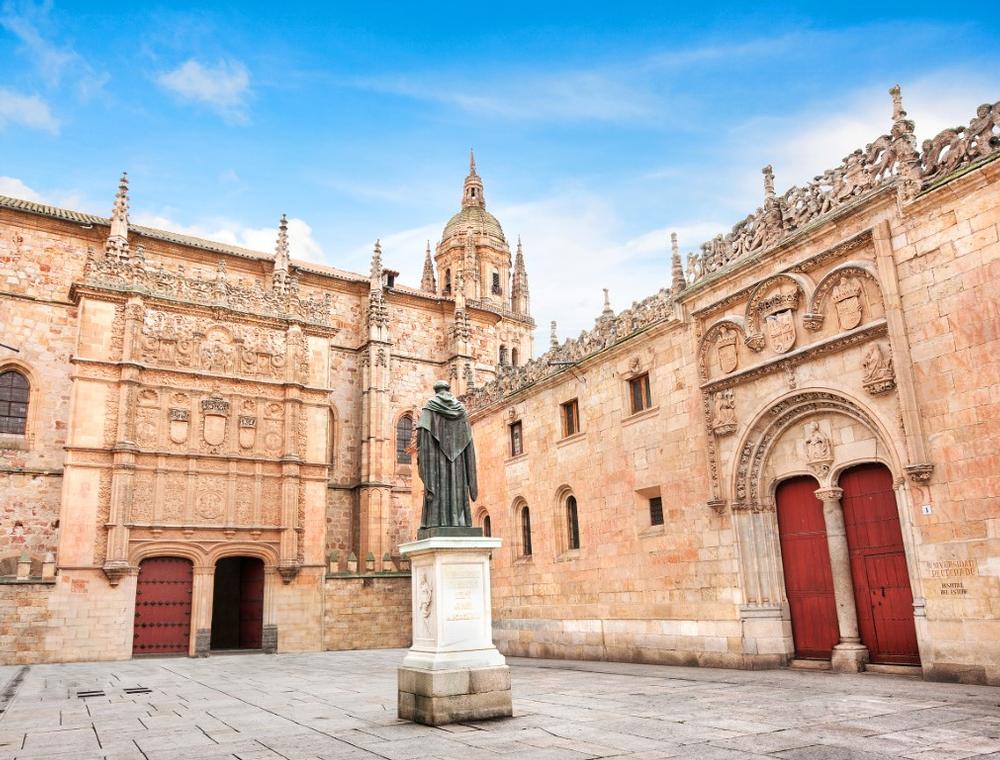
© JFL Photography/stock.adobe.com
Nestled in the center of Salamanca, Universidad de Salamanca (Salamanca University) is the oldest university in the country and considered to be one of the most beautiful universities in the world. Founded in 1134, the building boasts a beautifully crafted façade with Plateresque-style carvings, including the famous ‘frog on a skull’ which is meant to bring good luck. Other breathtaking structures in the university complex include the Patio de las Escuelas, the oldest buildings on the square, and a statue of Fray Luis de León, a famous writer during the Spanish renaissance and one of the many influential alumni of the university.
University of Salamanca, 37008 Salamanca, Spain, Phone: +34-923-29-46-48
2. Plaza Mayor
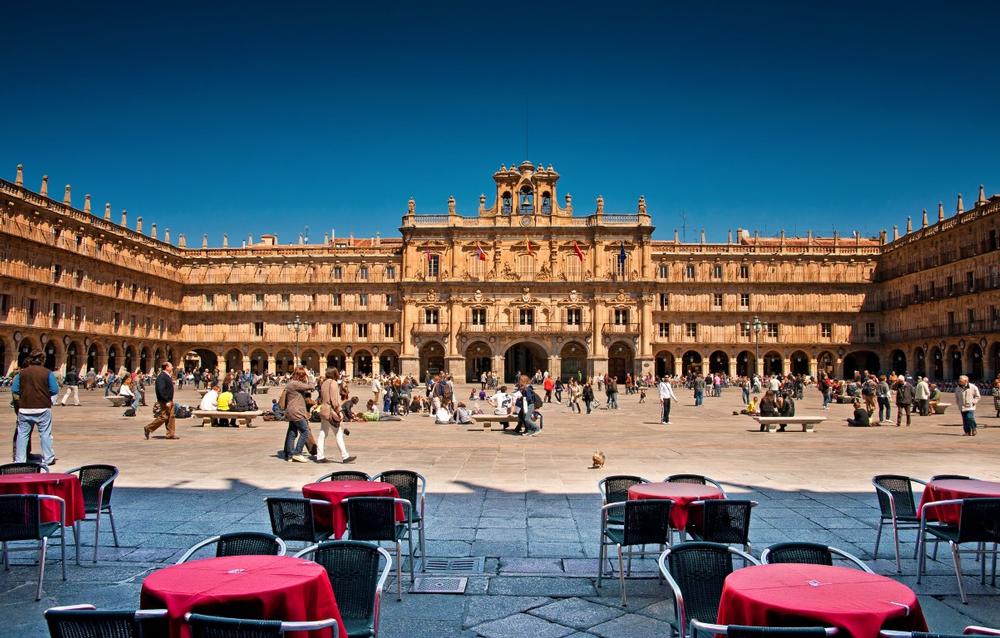
© Horváth Botond/stock.adobe.com
Resting at the heart of the city, Plaza Mayor is one of the largest public squares in Spain and is fondly known as the ‘living room’ of Salamanca. Built in 1755, Plaza Mayor boasts some of the most impressive Baroque-style architecture in the country and is considered the emblem of the city. The bustling square is lined with an arcade featuring 88 arches that run around the perimeter of the square, the pillars of which represent a famous figure from Salamanca’s rich history. In between the arches are plenty of cafés, restaurants, and tourist shops, packed with both locals and visitors enjoying the hustle and bustle of the beating heart of the city.
Plaza Mayor, Salamanca, Spain
3. Casa de las Conchas (House of Shells)
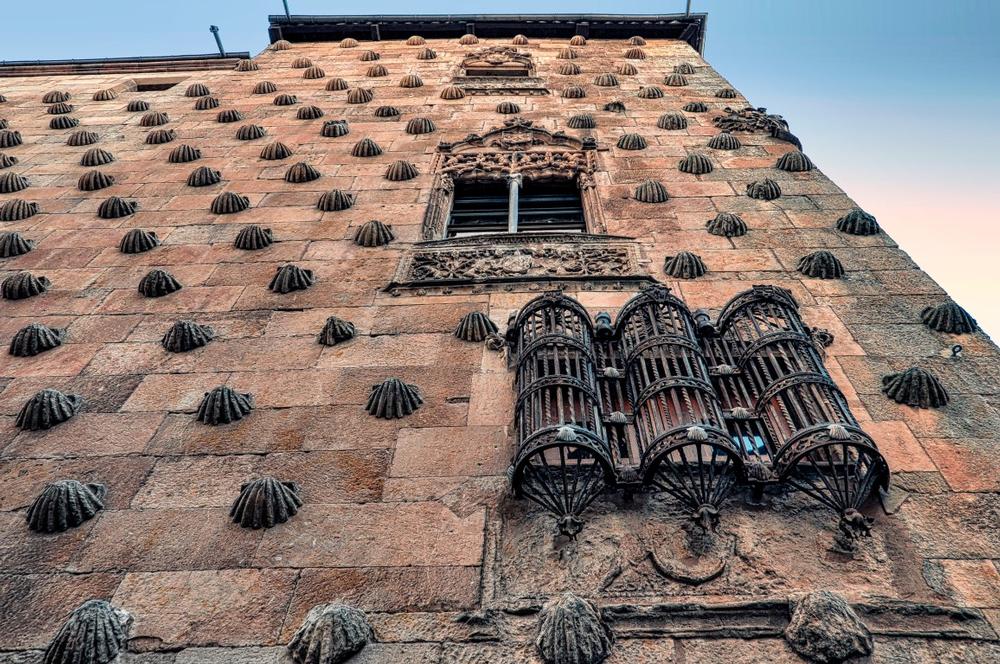
© Lux Blue/stock.adobe.com
The Casa da las Conchas (House of Shells) is a historical building in Salamanca that served as a palace in the 16th century and now houses a public library. Built in the early 1500s by Rodrigo Arias de Maldonado, a knight of the Order of Santiago de Compostela, the building boasts a combination of Gothic and Plateresque-style architecture with Mudejar elements and has an extraordinary façade decorated with more than 300 shells, the symbol of the order of Santiago. The façade also features the coat of arms of the Catholic Monarchs and four differently shaped Gothic-style windows, while other interesting elements of the building include the coat of arms of the Maldonado family, carvings of dolphins and vegetable elements.
2 Calle de la Compañía, Salamanca, Castilla y León, 37002, Spain, Phone: +34-923-26-93-17
Attractions for Couples
4. Museo Art Nouveau y Deco (Art Nouveau and Art Déco Museum)
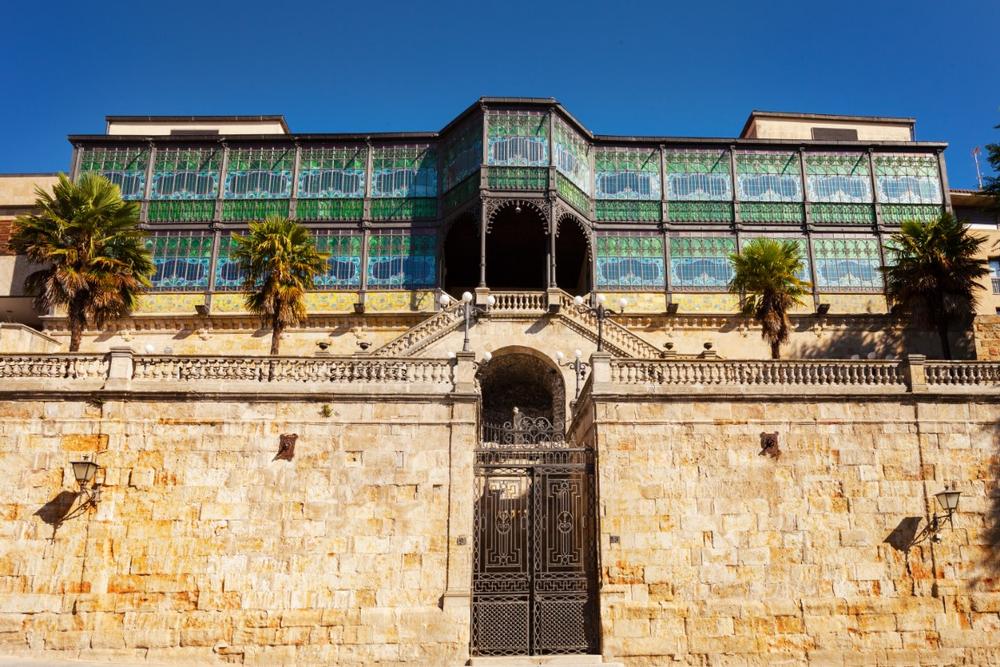
© demachy/stock.adobe.com
The Museo Art Nouveau y Deco (Art Nouveau and Art Déco Museum) is a renowned art museum that focuses on decorative arts from the Nouveau and Déco periods, spanning from the 19th century to World War II. The museum boasts 19 impressive collections featuring paintings, ceramics, sculptures, and art deco pieces, including intricate stained-glass works, chryselephantine statuettes, and the largest collection of porcelain dolls in the world. Signature items in the collections include Art Nouveau jewelry by Rene Lalique, glassworks and furniture by Émile Gallé, and porcelain pieces by Rosenthal and Mariano Benlliure.
Calle Gibraltar 14, 37008 Salamanca, Spain, Phone: +34-923-12-14-25
5. The Old and the New Cathedral
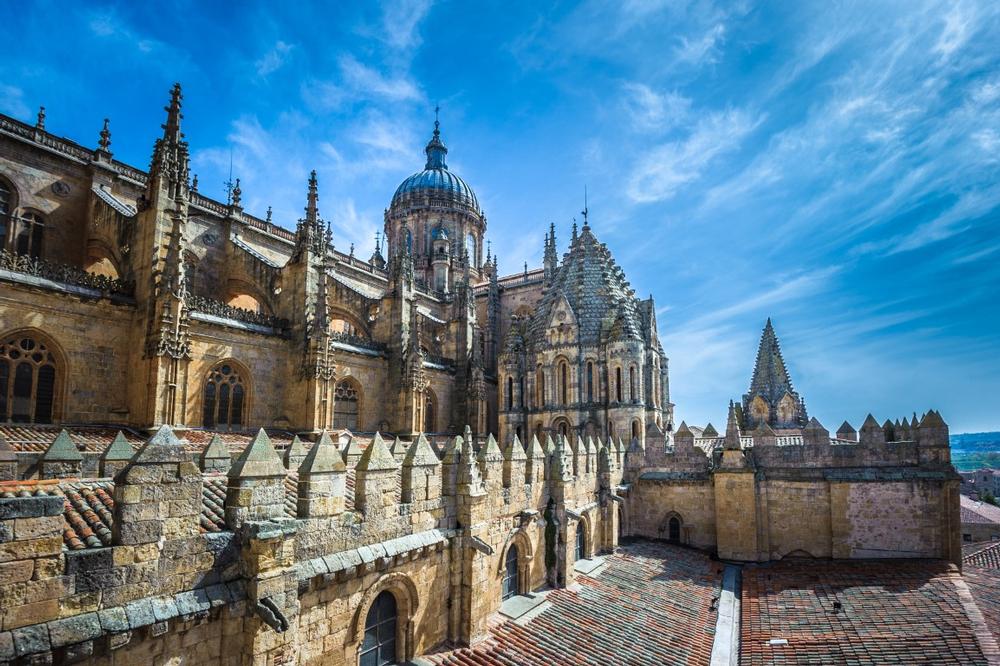
© javarman/stock.adobe.com
Salamanca is famous for having two cathedrals attached to each other – aptly known as the Old and the New Cathedrals. The Old Cathedral was erected between 1100 and 1200 and boasts a mixture of Gothic and Romanesque-style architecture and design, while the impressive New Cathedral was constructed in the 15th century in the Gothic style, but also features Baroque and Renaissance elements. The Old Cathedral can be accessed via the New Cathedral, which are both in harmony with each other, and visitors can climb the cathedral towers and stroll along the battlements, soaking up the spectacular panoramic vistas over the city.
Calle Benedicto XVI, Salamanca, Castilla y León, 37008, Spain, Phone: +34-923-21-74-76
6. Clerecia Church
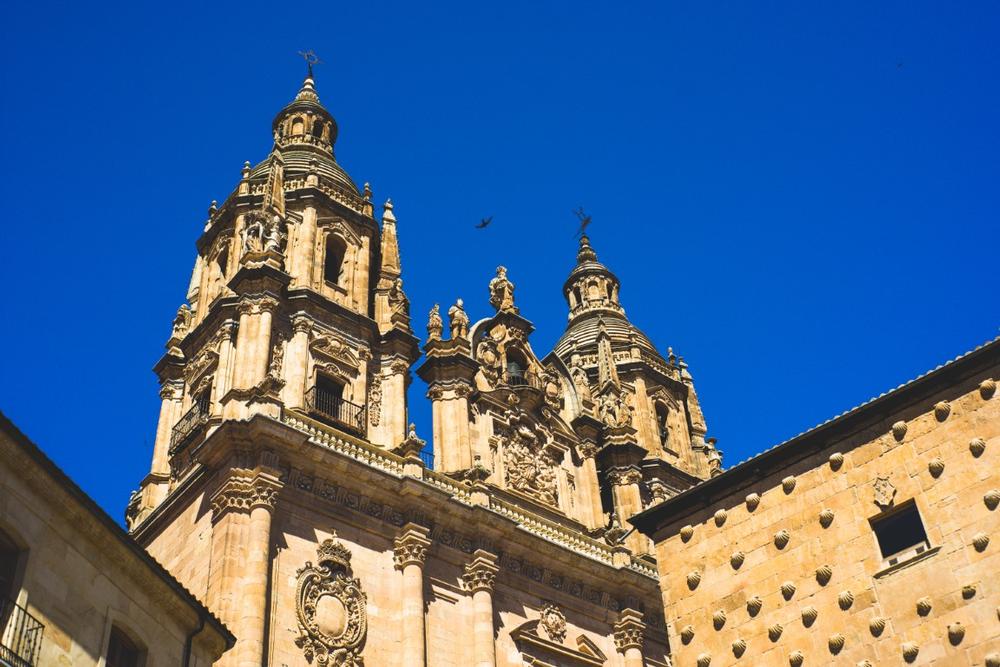
© Rick_79/stock.adobe.com
Formerly known as the Royal College of the Compthe university.Queen Margarita of Austria, the historic church has a three-part façade with ecclesiastical towers and a vast, three-floored Baroque cloister. Now the headquarters of Salamanca Pontificia University, the Clerecía Church, can be explored on guided tours of the university that has occupied the building since the 1940s. Visitors can climb to the transept between the building’s two towers (Scala Coeli) to enjoy spectacular views of the city.
Calle de la Compañía, 5, 37002 Salamanca, Spain, Phone: +34-923-27-71-00
Recommended Activities for Families
7. The Roman Bridge
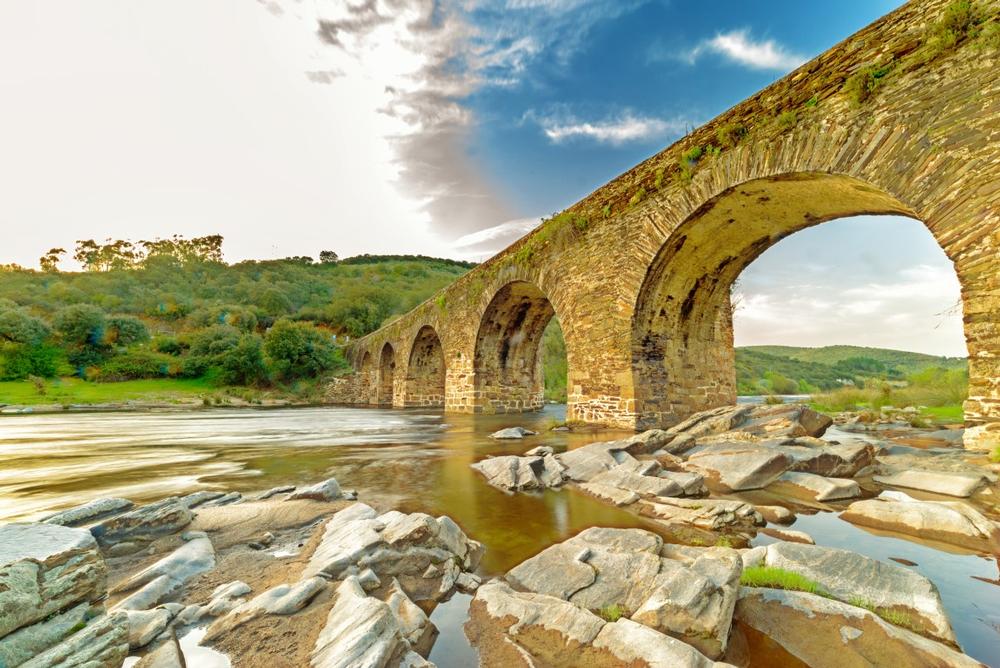
© cineuno/stock.adobe.com
The Roman Bridge is a 1,181-foot pedestrian bridge that spans the River Tormes and is believed to have been built in the first century A.D. by the Roman Emperor Marcus Ulpius Traianus. The historically important bridge is a real example of the city’s ancient origins and cultural significance and features 26 semi-circular arches featuring Celtic elements and an ancient Iberian sculpture of a boar on the north side. The bridge boasts spectacular views of the Old and the New Cathedral, particularly at night, and has been declared a National Monument.
Salamanca, Spain
8. Convento de San Esteban
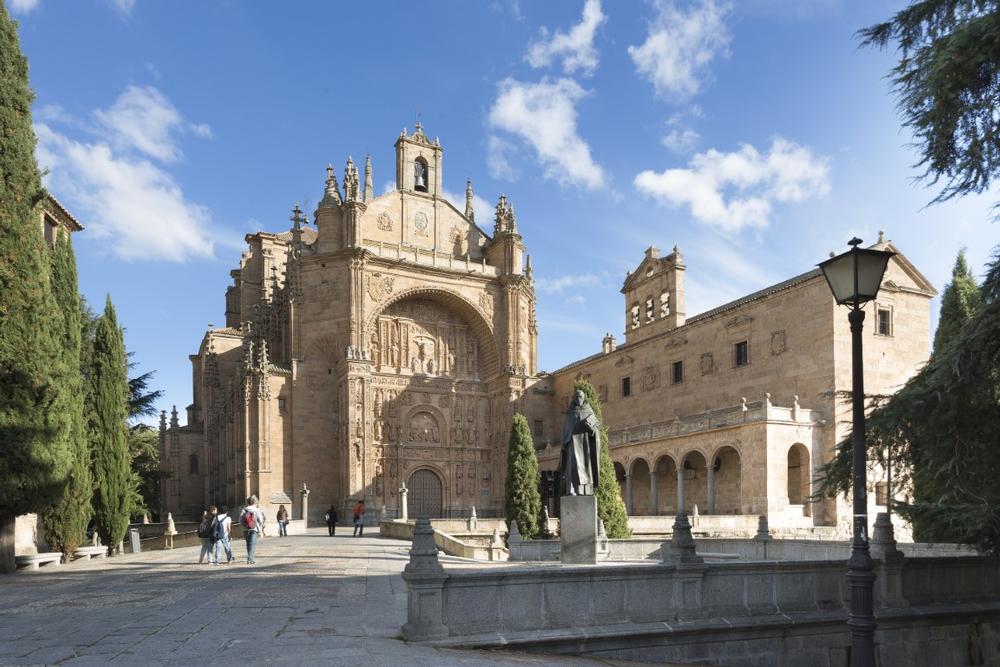
© PUNTOSTUDIOFOTO Lda/stock.adobe.com
The Convento de San Esteban is a Dominican monastery in the Plaza del Concilio de Trento, dating back to the 16th and 17th centuries. Built as a convent for the Order of the Dominicans in the Plateresque style, the convent features decorative elements of Baroque and Renaissance design and an extraordinary altar-like façade with intricate carvings. The magnificent building has three cloisters with a splendid central Gothic-Renaissance cloister, the 17th-century altar by José Churriguera, and a fascinating museum dedicated to the Dominicans. The building has been hailed as one of the most breathtaking buildings in the city.
Plaza del Concilio de Trento, s/n, 37001 Salamanca, Spain, Phone: +34-923-21-50-00
9. Arribes del Duero Natural Park
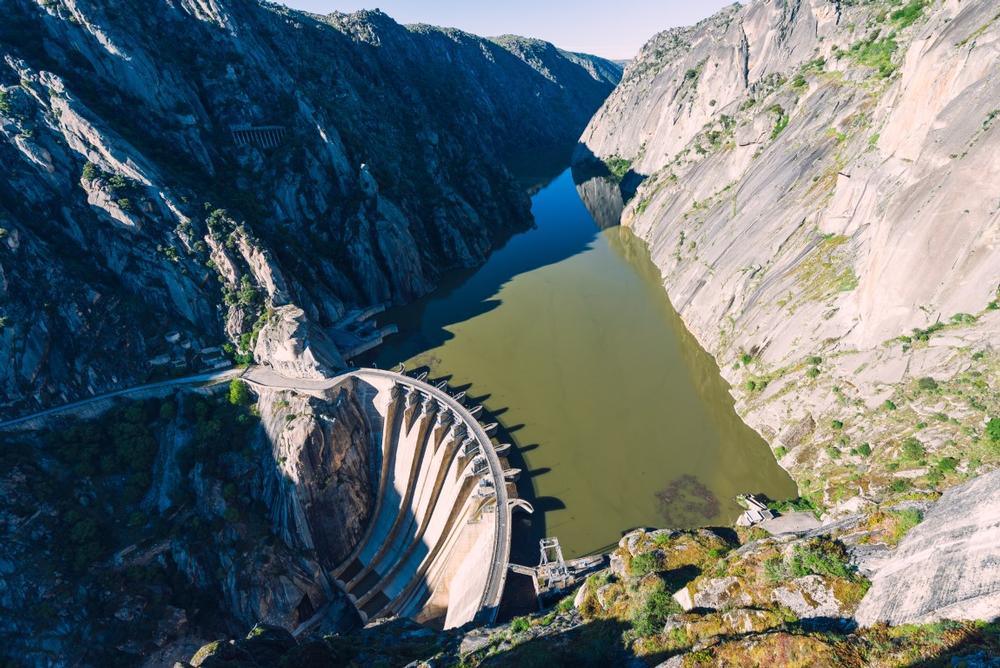
© Daniel/stock.adobe.com
The Arribes del Duero Natural Park is a protected region spanning 106 hectares that forms a natural border between Spain and Portugal. Set within the community of Castile and León, the park is home to a wide diversity of landscapes ranging from steep mountains covered in vineyards and fertile valleys to winding streams, rivers, and one of the largest inland lakes in Europe. The park is home to a variety of fauna and flora, such as the endangered black stork and several attractions like the cascading Pozo de Los Humos waterfall. The Arribes del Duero Natural Park offers excellent hiking, backpacking, bird and wildlife watching, and picnicking.
37246, Salamanca, Spain, Phone: +34-923-52-20-48
Where I Like to Eat
- Mesón de Gonzalo – Upscale Castilian cuisine with excellent local wine pairings near Plaza Mayor.
- Tapas 3.0 – Modern take on traditional tapas in a fun, creative setting.
- Café Novelty – Open since 1905, this literary café offers coffee, pastries, and a dose of history.
My favorite local events:
- Holy Week (Semana Santa) (March/April) – Dramatic religious processions and traditional celebrations throughout the city.
- Salamanca Fair and Festival (September) – Celebrate the city's patron saint with parades, music, and fireworks.
- University Graduation Season (June) – The city fills with festivities and graduates in traditional gowns and hats.
My favorite day trips within 30 Minutes of Salamanca, Spain:
- Alba de Tormes (30 min) – Visit the final resting place of Saint Teresa of Ávila and explore castle ruins by the river.
- Doñinos de Salamanca (15 min) – Enjoy quiet countryside, local wines, and traditional architecture.
- La Armuña Region (20–30 min) – Known for its lentils and rural landscapes, perfect for a scenic drive or picnic.
- Valverdón (25 min) – Home to Hacienda Zorita Wine Hotel & Spa, a luxury retreat with wine tastings and river views.
- Zarapicos (30 min) – Play golf or relax at a riverside resort near the Tormes River.
Plan Your Trip











